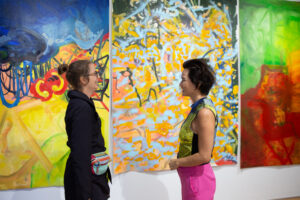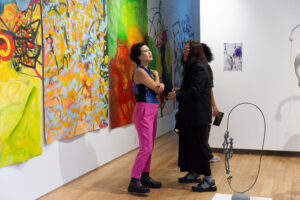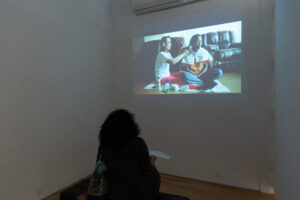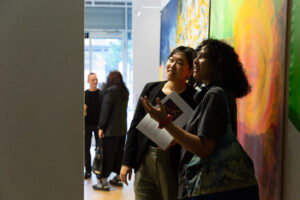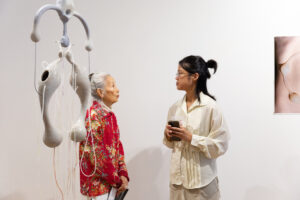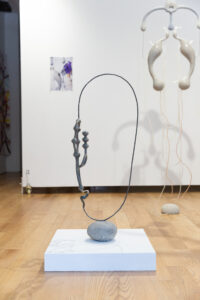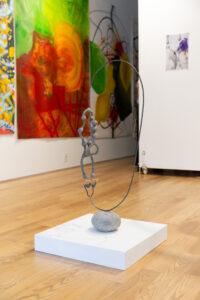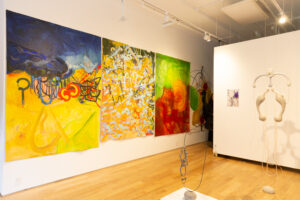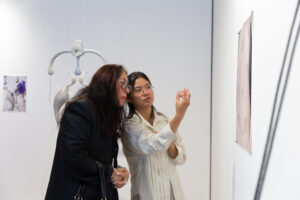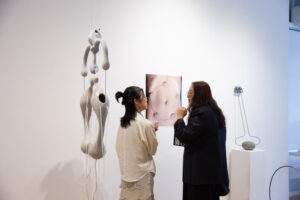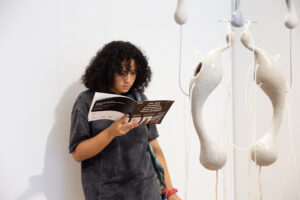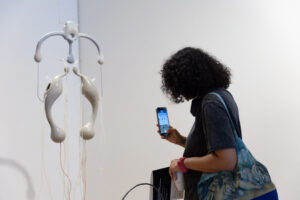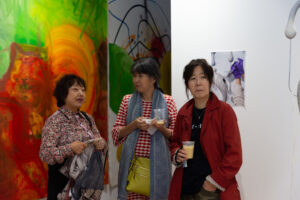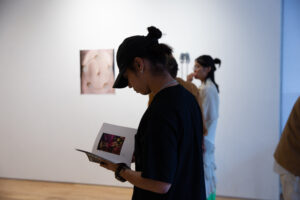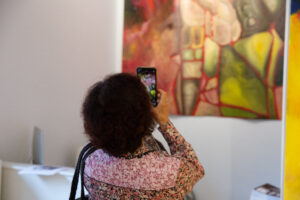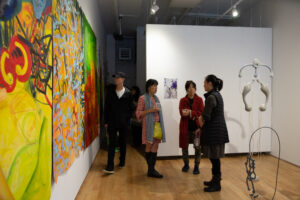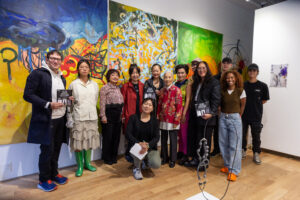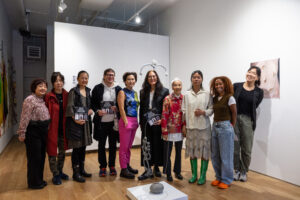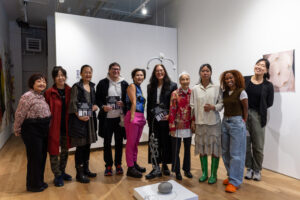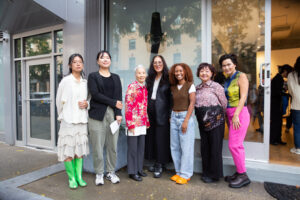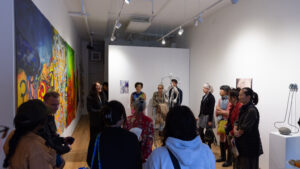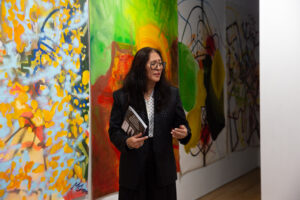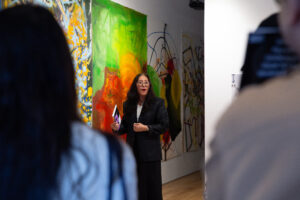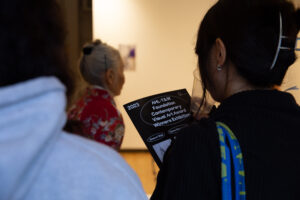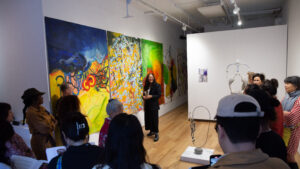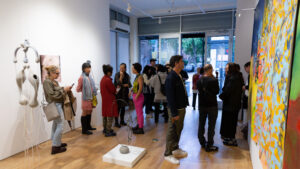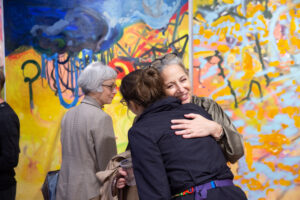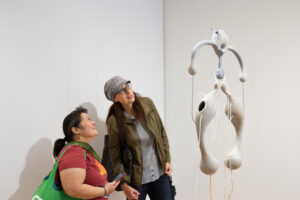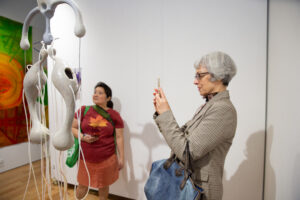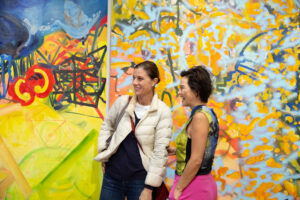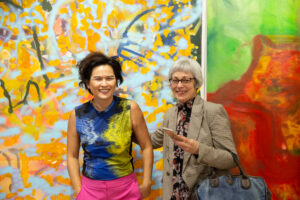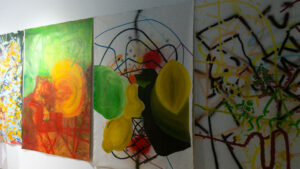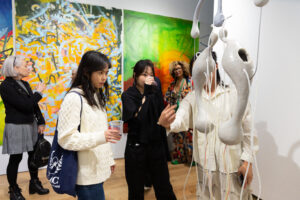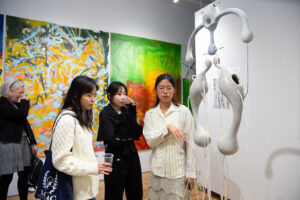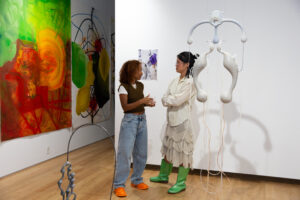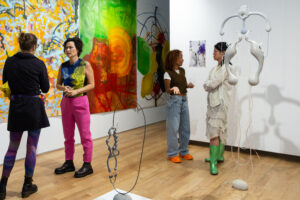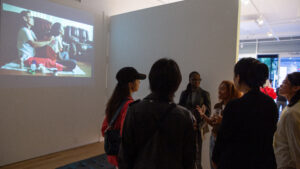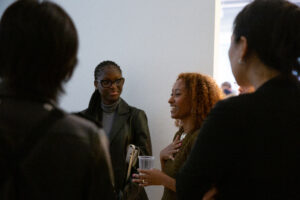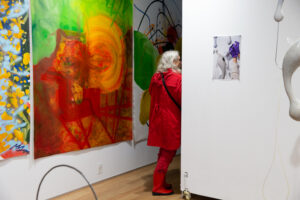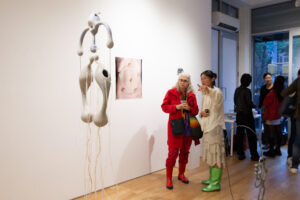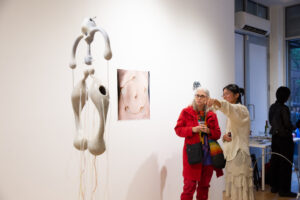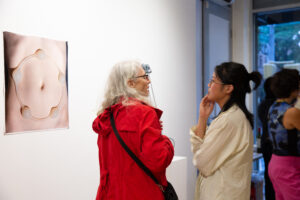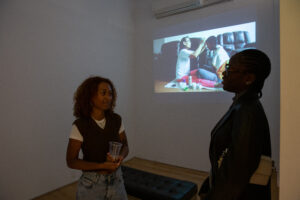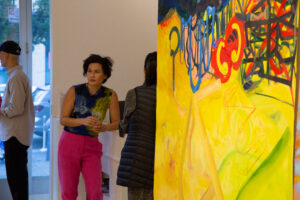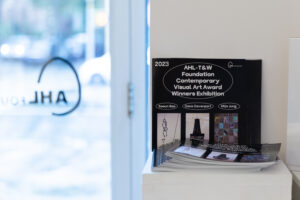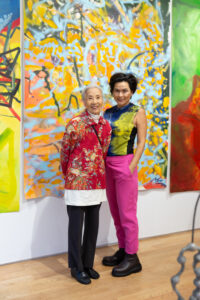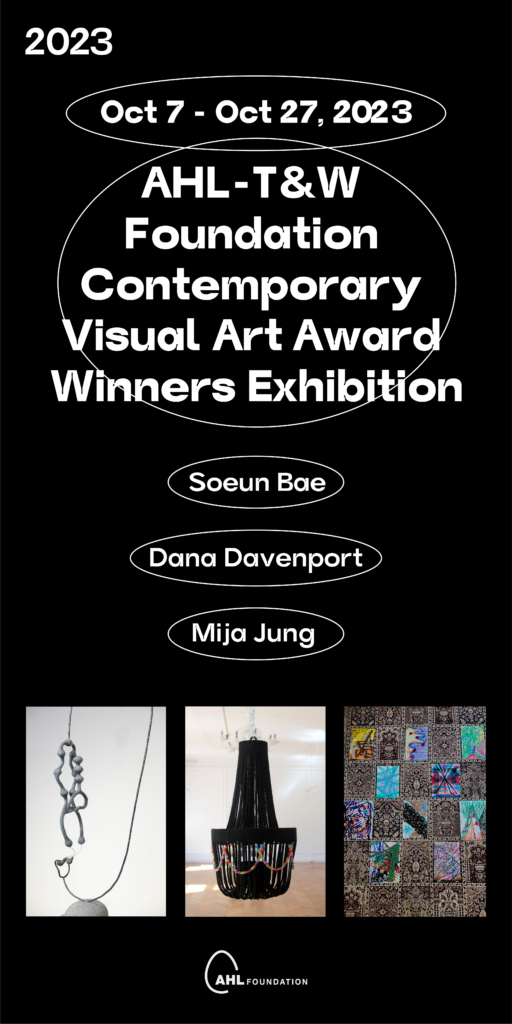
-
-
-
- Exhibition Dates: October 7, 2023 – October 27, 2023
- Curator: Gary Carrion-Murayari / Assistant Curator: Jiyoung Lee
- Participating Artists: Soeun Bae, Dana Davenport, Mija Jung
- Venue: AHL Foundation, Inc.
- 2605 Frederick Douglass Blvd. #C1, New York, NY 10030
-
-
-
-
-
- Opening Reception: Saturday, October 7, 3-5pm
- Gallery hours: Wednesday to Saturday, 12-6PM
-
-
Foreword to the Exhibition
The three winners of this year’s AHL Foundation prize take refreshingly unique approaches to answering some of the most challenging questions facing artists today, namely, what does it mean to be human in a world with radically shifting material realities and how can meaningful relationships between individuals be facilitated through objects and images. Soeun Bae, Dana Davenport, and Mija Jung work in distinct mediums but share a desire to visualize complex social phenomena in new and surprising ways. Their work demonstrates a deep awareness of art history, while at the same being experimental and responsive to contemporary life. While reflective of a generational imperative for art to critically reflect the political and social realities of this historical moment, their individual work is exceedingly generous and empathetic. They share an optimism in art as a tool for communication, self-reflection, and care.
Soeun Bae is an inventive sculptor who uses her enigmatic objects to suggest new forms of physical and social life. Bae’s sculptures mimic the form and function of bodily organs and medical devices suggesting technologically mediated states of existence. Although her work follows in the wake of artists from the 1990s who examined post-human states of being, Bae is less concerned with the artificiality of human life brought upon by technology and instead embraces the fragility and permeability of our bodies. Her work can appear clinical, alien, and dystopic, but it is also familiar and touchingly sensitive. In her performances, these objects are activated in ways that speak to the intimacies between individuals, and the technological devices we have created to support ourselves and each other. While Bae’s work is rooted in contemporary experiences of the body, her work reaches back to visionary feminist artists of the past, recalling the charged part-objects of Louise Bourgeois and the visionary prosthetics of Rebecca Horn. Her works suggest the possibility of new relationships between bodies, and between human and non-human forms.
At first glance, Dana Davenport’s work could not seem more distanced from that of Bae, but both artists use sculpture as a way of exploring the connection and disconnection we feel from those around us. Davenport similarly uses an interdisciplinary approach to explore personal identity and complex social structures. Inspired by her own dual Black and Korean identity, Davenport’s goal is critically articulating the points of contact and division between races and the possibility of reparative processes across social boundaries. In the past, Davenport has centered her own body in charged performances that spoke to personal experiences of racism and the larger tensions between the Black and Asian communities. Much of her recent work has focused on the economics and politics of the beauty industry, in particular the large number of beauty supply stores that service the Black community while being primarily owned by Koreans. Her Box Braid Chandeliers are elegantly complex objects that speak to the histories of craft, style, and labor that unite disparate African diasporic communities, while using materials that reflect complex global networks of economic and cultural exchange. Davenport’s installations use sculpture, video, and performance to create spaces that are critical of the ways capitalism and white supremacy have permeated all levels of experience, and instead propose thinking of spaces of art and exchange as places where healing and listening can take place.
In many ways, Mija Jung’s work appears to be the most traditional, grounded as it is in the language of abstract painting. But Jung’s work is far from a revival of an outdated modernist project. Their vibrant abstractions range in size, scale, and texture. While highly expressive, both gesturally and chromatically, Jung’s work is as much corporeal as it is emotional. They are speculative visions of how we perceive the world around us. Certain works function as abstracted, psychological portraiture, while others suggest the inner workings of the body in the form of neurological or vascular systems bursting to life. Jung has also spoken of their work as an attempt to create a gender-neutral aesthetic. The liminal position between figuration and abstraction of their paintings resists the institutional instrumentalization of identity suffered by much recent figurative painting. Jung’s work simultaneously suggests multiple histories of abstraction, all of which can be useful in expressing contemporary notions of identity and reality. Her work echoes the serial/systems-based work of artists like Alfred Jensen and Terry Winters, as well as the expressive, feminist abstraction of artists like Louise Fishman. In installations, Jung’s canvases become all-encompassing, enveloping the viewer in color and form. Her smaller paintings accumulate to become an archive of thoughts, feelings, and gestures with a tactility that acts a conduit between undefined and unrestrained bodies.
Bae, Davenport, and Jung each grapple with the fact that bodies in the current technological age, particularly those that are non-white or gender non-conforming, are constantly under threat. However, the models of embodied experienced that the three artists propose in their work is one that is committedly optimistic and potentially liberatory. They imagine a world where the rigid strictures of outdated moral values and exploitive economic systems are rejected in favor of open-ended dialogue, radical new forms, and a comprehensive recoding of social space. All of their work expresses a desire to think, feel, and act through the production of objects in ways that refresh and reimagine histories of art to serve a wider vision of what the future can be. Although they all are at early stages in their respective careers, these three talented individuals offer great hope for how art can meet the challenges of the world to come.
Gary Carrion-Murayari
Head Juror of 2023 AHL-T&W Foundation Contemporary Visual Awards
Kraus Family Curator at the New Museum

